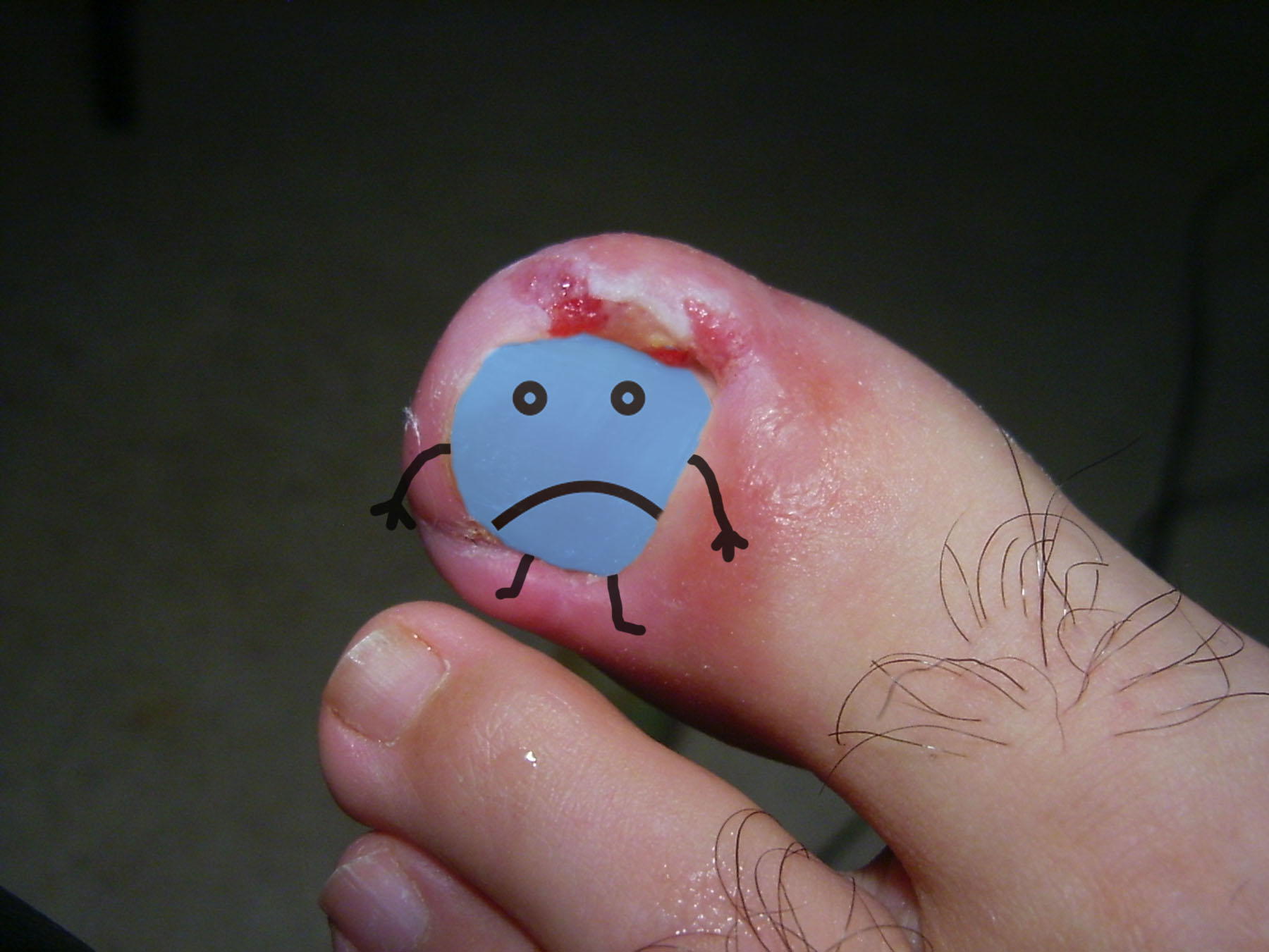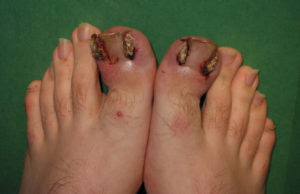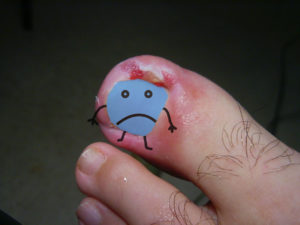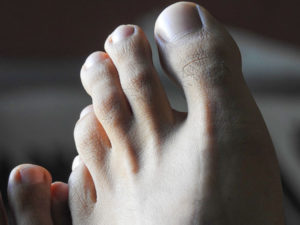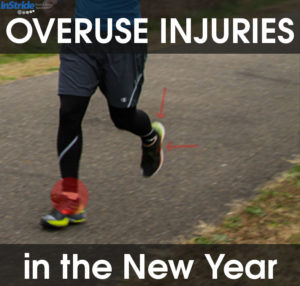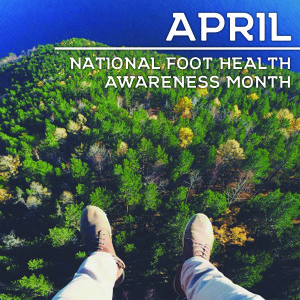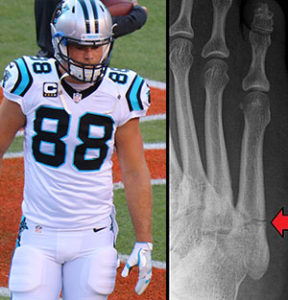The Ingrown Nail
David Collard DPM MHA
Ingrown nails are extremely common, and account for about 20% of the complaints of those seeking foot care. We often see patients who have been dealing with ingrown nails for several weeks before even seeking treatment. Many ask the question, “Why did I get this?” In this post we will talk about what ingrown nails are and what to do about them, and hopefully shed some light on why they occur.
What is it?
An ingrown nail is just like what the name says; it’s a nail that has begun to grow into the side of the skin border. This can sometimes come from improper trimming of nails. Tearing the nail off with your fingers or trying to cut into the corner (which many won’t admit to doing) may leave a small piece of nail called a “spicule.” This small jagged piece of nail can irritate the border of the skin as the nail continues to grow out, leading to swelling, more pain, and even possibly infection. The best way to avoid this is to cut the nails straight across and don’t dig into the corners.
Foot structure can also lead to nail problems. A flat foot or one that over pronates (wants to roll inward, thereby forcing the foot outward) can lead to ingrown nails, often in the outside border of the great toe nail.
Another type of ingrown nail can occur as some people age. The nail begins to curve inward on itself the further out the nail is from where it starts. These are often seen with fungal infections in the nail, a thickened nail, or (in rare cases) a bony spur at the tip of the toe bone.
Finally, some ingrown nails just “come out of nowhere.” The person hasn’t dug at their nails, but the nails slowly became more painful and swollen over time. (When we don’t know why something happened, doctors use the term idiopathic – it’s basically a fancy word for “I don’t know.”)
Progression.
When the ingrown nail continues to dig into the skin, several things happen:
1) It gets very painful and swollen
2) Draining clearish fluid
3) Granulation tissue (big red beefy tissue)
4) Infection (red, hot, swollen, with/without pus)
Many patients will be put on antibiotics for infection by their primary care doctor before coming to our office.
Diabetics and long-time smokers may have a much higher risk of significant complications if symptoms persist without treatment due to their poor blood flow.
What to do about painful ingrown nails?
Soaking in warm water and Epsom salts can be an effective way to help relieve pain and swelling. You may also try gently massaging the border skin away from the nail once the skin is softened.
What we do about them.
The earlier the patient comes in, the better. Often (but not always), if the patient arrives shortly after the pain has started, much of the process above can be avoided by letting the professionals trim out the spicule in a clean environment.
After it has gone on for several weeks and has become ANGRY, a bit more is required, such as removing a small border of the nail.
Often there is an option to remove that part of the nail so that side of the nail never grows back. If we do this, we will always numb the toe first to make sure it is as comfortable as possible.
Finally. Cut your nails straight across. No bathroom surgery! It is best to have an ingrown nail treated sooner rather than later. Putting off treatment longer usually means it will get worse and may even take longer to get over it.
If you or someone you know has an ingrown nail, we are here to help. Please contact us and schedule an appointment.
References:
1. Noel Bernard. Surgical Treatment of Ingrown Toenail without Matricectomy. Dermatologic Surgery. January 2008;34(1): 79–83.
2. Reyzelman AM, Trombello KA, Vayser DJ, Armstrong DG, Harkless LB. Are antibiotics necessary in the treatment of locally infected ingrown toenails? Arch Fam Med. 2000;9(9):930-932.
3. John D. Mozena. Classification System and Treatment Algorithm for Ingrown Hallux Nails. Journal of the American Podiatric Medical Association: March 2002, Vol. 92, No. 3, pp. 131-135.

